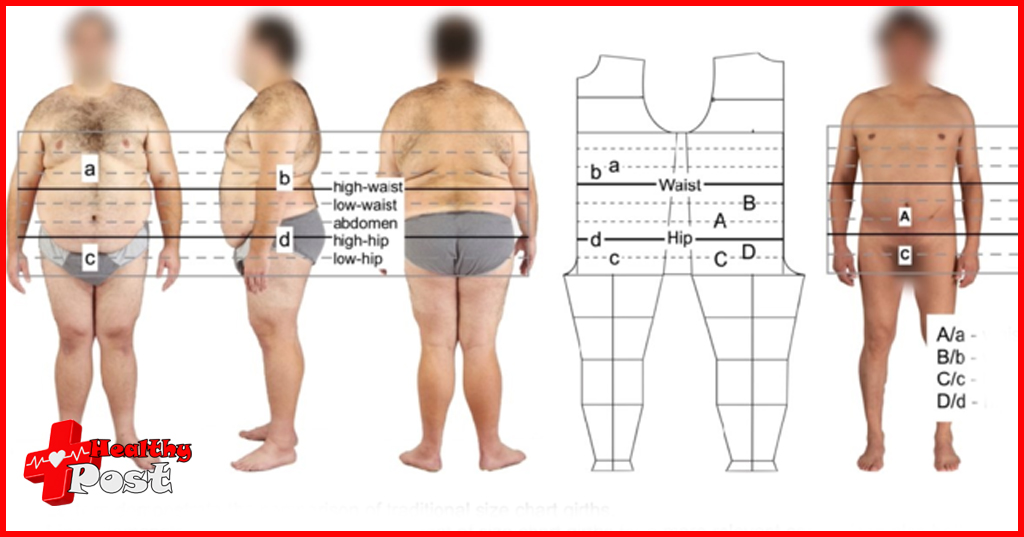
How to understand girth size chart
Choosing the right size is important for comfort and effectiveness. A girth size chart helps you find the perfect fit. Whether for clothing, accessories, or equipment, girth measurements ensure the best experience.
Why Understanding Girth Size Matters
Girth refers to the circumference of an object or body part. Knowing girth size is essential for:
- Better Fit: Ensures clothing, belts, and accessories fit properly.
- Health & Safety: Prevents discomfort or injury from tight or loose gear.
- Improved Performance: Essential for sports and medical applications.
A girth size chart provides clear measurements. It converts raw numbers into useful size categories. This makes shopping or choosing equipment much easier.
What This Article Covers
This guide explains girth size charts in simple terms. You will learn:
- How to measure girth correctly
- How to read girth size charts
- Common girth measurements in different industries
- Tips for finding the perfect fit
Sample Girth Size Chart
| Girth Measurement (inches) | Size Category | Common Uses |
|---|---|---|
| 10 – 15 | Small | Wristbands, small pets |
| 16 – 25 | Medium | Belts, knee braces |
| 26 – 35 | Large | Horse girths, waist belts |
| 36+ | Extra Large | Large animals, industrial applications |
Understanding girth size charts saves time and prevents mistakes. Follow this guide to make informed choices.
What is Girth Size?
Definition of Girth Size
Girth size is the measurement of the circumference around an object or body part. It is often used in clothing, fitness, and medical fields. Unlike length or width, girth measures the full round shape, providing an accurate fit for circular or cylindrical objects.
Difference Between Girth and Other Measurements
Girth is different from other common measurements:
- Girth vs. Width: Width measures a straight line across an object, while girth measures the entire circumference.
- Girth vs. Length: Length measures how long something is, but girth wraps around the object.
- Girth vs. Diameter: Diameter measures the straight line through the center of a circle, while girth measures the outer boundary.
For example, in clothing, girth is essential for belts, waistbands, and armholes, while width and length determine overall size.

Why Girth Size Matters
Understanding girth size is important for several reasons:
- Ensures Proper Fit
- In fashion, girth size helps find the right clothing size.
- In sports, equipment like knee braces and gloves rely on girth for a snug fit.
- Improves Comfort and Safety
- A well-measured girth prevents tightness or looseness, avoiding discomfort or injury.
- In medical applications, braces and compression garments must match girth for effectiveness.
- Enhances Performance
- For animals, like horses and dogs, girth size is crucial for fitting harnesses or saddles.
- In fitness, tracking girth measurements helps monitor muscle growth or fat loss.
Understanding girth size ensures better choices in clothing, gear, and health applications.
Importance of Girth Size Charts
Girth size charts are essential for selecting the right fit in various industries. They provide clear measurements, reducing guesswork and ensuring accuracy.
How Girth Size Charts Help
Girth size charts help by:
- Providing Standardized Measurements: They convert raw numbers into clear size categories.
- Reducing Errors: They help avoid buying the wrong size, saving time and money.
- Ensuring Comfort and Safety: Proper girth measurements prevent discomfort, tightness, or loose fits.
Examples of Where Girth Size Charts Are Used
- Clothing and Accessories
- Used for waistbands, belts, gloves, and compression garments.
- Sports and Fitness
- Helps in selecting knee braces, wrist supports, and weightlifting belts.
- Medical Applications
- Important for compression wraps, prosthetic fittings, and braces.
- Pet and Animal Care
- Essential for horse saddles, dog harnesses, and pet collars.
- Industrial and Construction Equipment
- Used in measuring pipes, straps, and protective gear.
Benefits of Using Girth Size Charts
✅ Accuracy: Provides precise measurements for a better fit.
✅ Convenience: Saves time when shopping or selecting equipment.
✅ Comfort and Safety: Ensures items are neither too tight nor too loose.
✅ Better Performance: Essential for sports and medical needs.
Girth size charts are a simple but powerful tool. They help in making informed choices for clothing, health, and equipment needs.
How to Measure Girth Size
Measuring girth size is simple and requires the right tools and technique. Follow this guide for accurate results.
Tools Needed for Measurement
✔ Measuring Tape: A flexible tape measure is best for body and object measurements.
✔ Flat Surface: Helps keep the tape level for consistency.
✔ Mirror (Optional): Useful for self-measurements.
Step-by-Step Guide to Measuring Girth
- Choose the Right Area
- Identify where you need to measure girth (waist, chest, arm, thigh, or an object).
- Wrap the Measuring Tape
- Place the tape around the widest part of the body or object.
- Keep it snug but not too tight.
- Ensure a Level Measurement
- Make sure the tape is parallel to the ground.
- Avoid twisting or tilting.
- Take the Reading
- Read the measurement where the tape meets itself.
- Note it down for reference.
Tips for Accurate Measurement
✔ Measure over light clothing or bare skin.
✔ Take measurements at the same time of day for consistency.
✔ Double-check by measuring twice.
Following these steps ensures precise girth measurements for clothing, fitness, and medical needs.
Reading a Girth Size Chart
A girth size chart helps convert measurements into standard sizes. Understanding its components makes selecting the right size easier.
Explanation of Chart Components
A girth size chart typically includes:
- Measurement Range: Shows girth sizes in inches or centimeters.
- Size Categories: Divides measurements into small, medium, large, etc.
- Usage/Application: Specifies what the chart applies to (e.g., clothing, pets, equipment).
How to Read and Interpret the Chart
- Find Your Girth Measurement
- Measure your girth using a measuring tape.
- Compare the number to the chart.
- Match It to a Size Category
- Look for the range your measurement falls into.
- Select the size listed next to it.
- Check Additional Notes
- Some charts include fit recommendations (e.g., “snug fit” or “loose fit”).
- If between sizes, choose based on preference or usage.
Common Symbols and Terms Used
📏 CM / IN: Units of measurement (centimeters or inches).
🔄 Adjustable Fit: Indicates items that allow adjustments.
📌 Recommended Size: Highlights the best option based on girth.
Reading a girth size chart correctly ensures a proper fit for clothing, gear, and accessories.
Using Girth Size Charts for Different Purposes
Girth size charts are useful in various fields. They ensure the right fit for clothing, health, fitness, and animal care.
Girth Size Charts in Clothing
Girth measurements help determine sizes for:
- Waistbands and Belts: Ensures a secure but comfortable fit.
- Gloves and Sleeves: Prevents tightness or looseness around hands and arms.
- Hats and Helmets: Measures head circumference for a proper fit.
Girth Size Charts in Health and Fitness
Accurate girth measurements are essential for:
- Body Measurements: Tracks fitness progress by measuring waist, arms, and thighs.
- Compression Garments: Ensures medical braces and supports fit correctly.
- Sports Equipment: Helps choose weightlifting belts, knee braces, and protective gear.
Girth Size Charts in Animal Care
Pet and livestock equipment depend on girth measurements for:
- Dog and Cat Harnesses: Ensures comfort and prevents slipping.
- Horse Saddles and Girth Straps: Keeps riding gear secure and safe.
- Veterinary Care: Helps with medical wraps and prosthetics for animals.
Using the right girth size chart ensures a better fit, comfort, and safety across different applications.
Common Mistakes in Measuring Girth
Measuring girth may seem simple, but small errors can lead to incorrect sizes. Avoid these mistakes to ensure accuracy.
Common Errors to Avoid
❌ Using a Non-Flexible Measuring Tape – A rigid ruler won’t wrap around properly. Always use a flexible tape measure.
❌ Holding the Tape Too Loose or Too Tight – A loose tape gives a larger measurement, while a tight tape gives a smaller one. Keep it snug but not restrictive.
❌ Measuring Over Thick Clothing – Bulky clothes add extra inches. Measure over light clothing or bare skin for accuracy.
❌ Not Keeping the Tape Level – A tilted or uneven tape results in incorrect readings. Keep it straight and parallel to the ground.
How to Correct Measurement Mistakes
✔ Use a Mirror or Ask for Help – This ensures the tape is positioned correctly.
✔ Take Multiple Measurements – Measure at least twice and use the average if results vary.
✔ Follow Standard Measurement Guidelines – Different industries have specific girth measuring methods. Always check the correct approach.
Importance of Rechecking Measurements
🔍 Ensures Accuracy – Reduces the risk of ordering the wrong size.
📏 Prevents Discomfort – A proper fit avoids tightness or looseness.
🛍️ Saves Time and Money – Prevents returns and exchanges due to sizing errors.
Taking the time to measure correctly leads to better fit, comfort, and performance.
Girth Size Chart Examples
Girth size charts vary depending on their purpose. Below is a standard example for general use.
Example of a Standard Girth Size Chart
| Girth Measurement (inches) | Size Category | Common Uses |
|---|---|---|
| 10 – 15 | Small | Wristbands, small pets |
| 16 – 25 | Medium | Belts, knee braces |
| 26 – 35 | Large | Waist belts, horse girths |
| 36+ | Extra Large | Large animals, industrial applications |
Explanation of the Example Chart
- Girth Measurement (inches): The total circumference of the object or body part being measured.
- Size Category: Classification based on standard sizing (Small, Medium, Large, etc.).
- Common Uses: Items that typically require that girth measurement.
How to Use the Example Chart
- Measure Your Girth
- Use a measuring tape to get an accurate girth size.
- Find Your Measurement in the Chart
- Compare your result to the ranges listed.
- Select the Correct Size
- Choose the size category that matches your measurement.
Using a girth size chart ensures the right fit for clothing, accessories, and equipment.
Customizing Girth Size Charts
Girth size charts can be customized for specific needs. A tailored chart ensures accurate sizing for unique applications.
When to Customize a Chart
🔹 Specialized Products: If standard size charts don’t fit unique items like custom clothing or medical braces.
🔹 Industry-Specific Needs: Different industries (fashion, sports, veterinary care) may have varying size standards.
🔹 Personal Measurements: For fitness tracking or custom gear, a personalized chart improves accuracy.
FAQs About Girth Size Charts
Common Questions and Answers
Q1: What is a girth size chart?
A girth size chart is a reference table that helps determine the correct size based on girth measurements. It is commonly used in clothing, fitness, medical, and animal care industries.
Q2: How do I measure girth correctly?
Wrap a flexible measuring tape around the widest part of the body or object. Keep it snug but not too tight, and ensure it is level.
Q3: What if my measurement falls between two sizes?
Choose a size based on preference. For a snug fit, go smaller; for a looser fit, go larger. Some items, like belts or straps, may be adjustable.
Q4: Are girth size charts the same for all products?
No, different industries and brands use varying size charts. Always check the specific chart for the product you’re purchasing.
Tips for Beginners
✔ Use a soft measuring tape for accuracy.
✔ Take multiple measurements and use the average.
✔ Measure over thin clothing or bare skin.
✔ Check size charts before purchasing to avoid returns.
Additional Resources
📌 Online Girth Calculators – Many websites offer free measurement tools.
📌 Brand-Specific Size Guides – Check official brand websites for accurate sizing.
📌 Measurement Apps – Apps like MySizeID can help determine the right fit.
Understanding girth size charts makes shopping and fitting much easier!
Conclusion
Recap of Key Points
- Girth size refers to the circumference of an object or body part and is important for proper fit and comfort.
- Girth size charts help in various industries, including clothing, health, fitness, and animal care.
- Accurate measurements are essential—use a flexible measuring tape and follow correct techniques.
- Reading the chart correctly ensures you select the right size based on your measurement.
- Customization may be needed for specific applications, and tools like Excel or Canva can help create personalized charts.
Final Thoughts on Understanding Girth Size Charts
Girth size charts simplify the process of finding the right fit. Whether for personal use, shopping, or professional needs, these charts provide accuracy and convenience.
Encouragement to Use the Charts for Better Accuracy
Using a girth size chart reduces sizing errors, enhances comfort, and improves performance. Always measure carefully, consult a reliable chart, and choose the best fit for your needs. With the right approach, you’ll make informed and confident sizing decisions!

